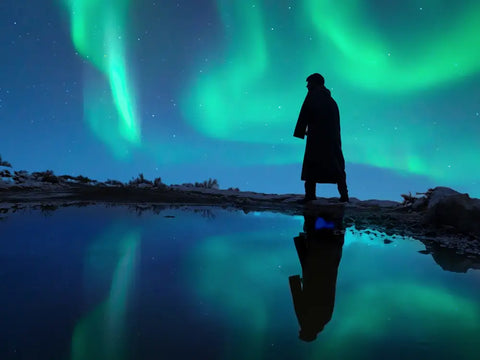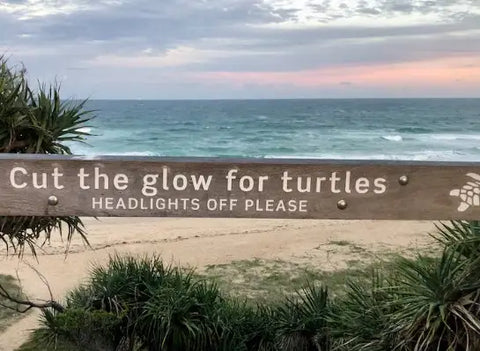
Lighting Pollution! How Does It Affect Australia?
Share
Australia is a big country, so to make such a general statement like “Lighting Pollution is Destroying Our Wildlife” is a bit ridiculous when Australia is such a vast wilderness.
 In a country so large and as diverse as Australia and in particular our own backyard Queensland (The Sunshine Coast) we must take into account Coastal, City and Outback areas as well. We must consider that low light areas would include places like Outback Australia. Lack of population would naturally see reduced light pollution.
In a country so large and as diverse as Australia and in particular our own backyard Queensland (The Sunshine Coast) we must take into account Coastal, City and Outback areas as well. We must consider that low light areas would include places like Outback Australia. Lack of population would naturally see reduced light pollution.
 In our rural country areas over vast distances there’s no lighting at all, it is a stargazer's delight. In these areas there’s great opportunities to view our planetary system. Simply for those reasons Lighting Pollution isn’t a problem.
In our rural country areas over vast distances there’s no lighting at all, it is a stargazer's delight. In these areas there’s great opportunities to view our planetary system. Simply for those reasons Lighting Pollution isn’t a problem.
These regions offer stunning views of the night sky, being popular among astronomers and stargazers alike.
 Then on the extreme end of the scale in our big cities like Brisbane, Sydney and Melbourne, we are finding 24/7 lighting. There’s advertising signs, street lighting directional signs, the list goes on. These problems encountered in the metropolitan area are reduced visibility of celestial objects.
Then on the extreme end of the scale in our big cities like Brisbane, Sydney and Melbourne, we are finding 24/7 lighting. There’s advertising signs, street lighting directional signs, the list goes on. These problems encountered in the metropolitan area are reduced visibility of celestial objects.
The clarity of the stars in our solar system is dramatically reduced by light pollution.
Included could be the effect and impact on human health. Continual exposure to constant artificial lighting is affecting our vision in both young and old alike.
 Authorities are currently addressing and regulating and promoting responsible lighting practices. Enthusiasts and other organisations are working together to raise awareness of the problems of light pollution.
Authorities are currently addressing and regulating and promoting responsible lighting practices. Enthusiasts and other organisations are working together to raise awareness of the problems of light pollution.
The night sky is not going by unnoticed in their minds and many are spreading the word.
So what are the effects of light pollution on the coast of Australia?
Like many coastal regions around the world and on Australias' coast, the effect on marine life is becoming more evident.
It's probably more noticeable here in Australia because of our extensive coastline. Unfortunately some of our unique natural habitats are in highly populated coastal areas. Some of the effects of light pollution are seen in turtle nesting areas on popular beaches.
 The disruption of marine life includes Bird Life (Nesting areas). Sea Turtles including certain species of Fish and Coral Reefs are affected.
The disruption of marine life includes Bird Life (Nesting areas). Sea Turtles including certain species of Fish and Coral Reefs are affected.
Artificial lighting from streets and parks affect the natural behaviour of hatchlings of sea turtles. They become disorientated and some never make it into the ocean and are lost to predators.
Natural nesting areas for birds are reduced by the effects of artificial lighting. This unnatural invasion reduces the breeding season also affecting the available nesting areas. Reducing the number of chicks surviving to sustain the population.
Excessive light can is contributing to Coral Bleaching in coastal areas.
The Great Barrier Reef, the world's largest reef system is suffering from Coral Bleaching. There's constant visitor and tourist traffic day and night. All using artificial light to highlight the beauty of the reef.
 Excessive light pollution can contribute to coral bleaching in many coastal regions. For our own personal health, continual artificial light disrupts sleep patterns. Many health problems are a result of sleep disorders contributed from too much light.
Excessive light pollution can contribute to coral bleaching in many coastal regions. For our own personal health, continual artificial light disrupts sleep patterns. Many health problems are a result of sleep disorders contributed from too much light.
In some areas artificial light is destroying the natural beauty of an area, while affecting the natural Ecological. It disrupts the natural nocturnal behaviours of many animals. Some species thrive on artificial lighting bringing them to life in plague proportions.
 To curtail the effects of Australian Coastal Light pollution, councils are implementing special outdoor street lighting. If the glare impact is under control, effects on Wildlife including human elements improve.
To curtail the effects of Australian Coastal Light pollution, councils are implementing special outdoor street lighting. If the glare impact is under control, effects on Wildlife including human elements improve.
The implementation of dark sky programs and lighting regulations in coastal communities and national parks will preserve the natural beauty of the night sky.
Raising awareness, like Discount Lighting and Fans is doing among residents, businesses, and tourists.
 It's about the importance of responsible lighting practices and the protection of coastal ecosystems.
It's about the importance of responsible lighting practices and the protection of coastal ecosystems.
Protecting Sensitive Areas: Designating and protecting sensitive coastal zones and critical habitats from excessive artificial lighting to minimise its impact on wildlife.
Talk to our team here at Discount Lighting and Fans about how to reduce light pollution.
We can help preserve the unique coastal environment here on the Sunshine Coast. If you live in close proximity to any Sunshine Coast beach, particularly if you are across the road then you need to investigate if your lighting arrangements could affect our natural habitat.

Help to ensure the well-being of both its ecosystems and human inhabitants.

